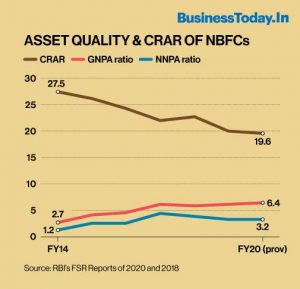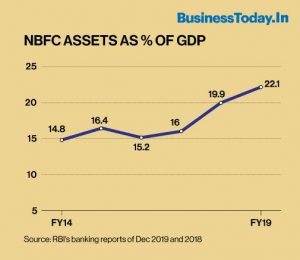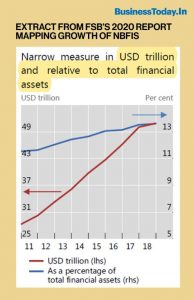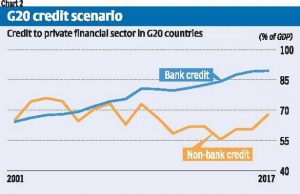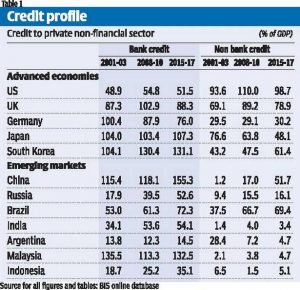DAILY CURRENT AFFAIRS (FEBRUARY 11, 2022)
THE INDIAN POLITY AND GOVERNANCE
1. SC SAYS TOO EARLY TO INTERVENE IN KARNATAKA HIJAB CONTROVERSY
THE CONTEXT: The Supreme Court said it was “too early” for it to intervene in the Karnataka hijab row when the State High Court was hearing it.
- The court’s response came to a plea made by senior advocate Kapil Sibal to transfer the petitions from the High Court to the top court and to place it before a nine-judge Bench examining questions of law on religious freedom emanating from the Sabarimala review verdict.
- In February 2020, the Supreme Court had upheld the decision of the Sabarimala Review Bench to refer to a nine-judge Bench questions on the ambit and scope of religious freedom practised by multiple faiths.
- The court had framed various questions of law for the nine-judge Bench to decide. These include:
- What is the scope and ambit of religious freedom under Article 25 of the Constitution?
- What is the interplay between religious freedom and rights of religious denominations under Article 26 of the Constitution?
- Whether religious denominations are subject to fundamental rights?
- What is the definition of ‘morality’ used in Articles 25 and 26?
- What is the ambit and scope of judicial review of Article 25? What is the meaning of the phrase “sections of Hindus under Article 25 (2)(b)?
- Whether a person not be- longing to a religious group can question the practices, beliefs of that group in a PIL petition?
FUNDAMENTAL RIGHTS RELATED TO FREEDOM OF RELIGION
- Article 25 says that all persons are equally entitled to freedom of conscience and the right to freely profess, practice and propagate religion. The implications of these are:
- Freedom of conscience: Inner freedom of an individual to mould his relation with God or Creatures in whatever way he desires.
- Right to profess: Declaration of one’s religious beliefs and faith openly and freely.
- Right to practice: Performance of religious worship, rituals, ceremonies and exhibition of beliefs and ideas.
- Right to propagate: Transmission and dissemination of one’s religious beliefs to others or exposition of the tenets of one’s religion. But, it does not include a right to convert another person to one’s own religion. Forcible conversions impinge on the ‘freedom of conscience’ guaranteed to all the persons alike.
- Article 25 covers not only religious beliefs (doctrines) but also religious practices (rituals). Moreover, these rights are available to all persons—citizens as well as non-citizens.
- However, these rights are subject to public order, morality, health and other provisions relating to fundamental rights.
- Further, the State is permitted to:
- regulate or restrict any economic, financial, political or other secular activity associated with religious practice; and
- provide for social welfare and reform or throw open Hindu religious institutions of a public character to all classes and sections of Hindus.
- Article 25 also contains two explanations: one, wearing and carrying of kirpans is to be included in the profession of the Sikh religion; and two, the Hindus, in this context, include Sikhs, Jains and Buddhists.
- According to Article 26, every religious denomination or any of its section shall have the following rights:
a) Right to establish and maintain institutions for religious and charitable purposes.
b) Right to manage its own affairs in matters of religion.
c) Right to own and acquire movable and immovable property.
d) Right to administer such property in accordance with law.
- Article 25 guarantees rights of individuals, while Article 26 guarantees rights of religious denominations or their sections. In other words, Article 26 protects collective freedom of religion. Like the rights under Article 25, the rights under Article 26 are also subject to public order, morality and health but not subject to other provisions relating to the Fundamental Rights.
- Supreme Court held that the ‘Ramakrishna Mission’ and ‘Ananda Marga’ are religious denominations within the Hindu religion. It also held that Aurobindo Society is not a religious denomination.
- Article 27 lays down that no person shall be compelled to pay any taxes for the promotion or maintenance of any religion or religious denomination. In other words, the State should not spend the public money collected by way of tax for the promotion or maintenance of any religion. This provision prohibits the State from favouring, patronising, and supporting one religion over the other. This means that the taxes can be used for the promotion or maintenance of all religions.
- This provision prohibits only levy of a tax and not a fee. This is because the purpose of a fee is to control secular administration of religious institutions and not to promote or maintain religion.
- Under Article 28, no religious instruction shall be provided in any educational institution wholly maintained out of State funds. However, this provision shall not apply to an educational institution administered by the State but established under any endowment or trust, requiring imparting of religious instruction in such institution.
- Further, no person attending any educational institution recognised by the State or receiving aid out of State funds shall be required to attend any religious instruction or worship in that institution without his consent. In case of a minor, the consent of his guardian is needed.
- Article 28 distinguishes between four types of educational institutions:
a) Institutions wholly maintained by the State.
b) Institutions administered by the State but established under any endowment or trust.
c) Institutions recognised by the State.
d) Institutions receiving aid from the State.
- In (a) religious instruction is completely prohibited while in (b), religious instruction is permitted. In (c) and (d), religious instruction is permitted on a voluntary basis.
THE INTERNATIONAL ISSUES
2. PM TO ADDRESS HIGH-LEVEL SEGMENT OF ONE OCEAN SUMMIT
THE CONTEXT: Prime Minister Narendra Modi will address the high-level segment of the One Ocean Summit through a video message, his office said.
THE EXPLANATION:
- The high-level segment of the summit will also be addressed by several other heads of states and governments including Germany, the United Kingdom, South Korea, Japan and Canada, the Prime Minister’s Office (PMO) said in a statement.
- PM Modi will address the high-level segment of the One Ocean Summit at around 2:30 pm on Friday through a video message, it said.
- The summit is being organised by France from February 9-11 in Brest in cooperation with the United Nations and the World Bank.
- The objective of the summit is to mobilise the international community to take tangible action towards preserving and supporting healthy and sustainable ocean ecosystems.
THE ECONOMIC DEVELOPMENT
3. GOVT BANS IMPORT OF FOREIGN DRONES TO PROMOTE DOMESTIC MANUFACTURING
THE CONTEXT: As part of efforts to promote domestic manufacturing of drones in the country, the Government has banned import of foreign drones with certain exceptions. The Directorate General of Foreign Trade DGFT has issued a notification banning the import of foreign drones.
THE EXPLANATION:
- The Directorate General of Foreign Trade (DGFT) under the commerce and industry ministry has issued a notification banning the import of foreign drones.
- The civil aviation ministry said that in order to promote Made in India drones, import of foreign drones has been prohibited with effect from February 9, 2022.
- Import of drones for Research and Development, defence and security purposes have been exempted from the ban but such imports will require due clearances. Import of drone components shall not require any approvals.
- Import of drones for R&D, defence and security purposes have been exempted from the ban but such imports will require due clearances.
- Import of drone components, however, shall not require any approvals.
- Import of drones by government entities, educational institutions recognised by central or state government, government recognised R&D entities and drone manufacturers for R&D purpose will be allowed in CBU, SKD or CKD form. This will be subject to import authorisation issued by DGFT in consultation with concerned line ministries.
- Import of drones for defence and security purposes will be allowed in CBU, SKD or CKD form subject to import authorisation issued by DGFT in consultation with concerned line ministries.
- After the rules, the ministry issued the drone airspace map and PLI scheme in September 2021, UTM policy framework in October 2021. Besides, drone certification scheme and single window DigitalSky Platform were put in place last month.
- The ministry came out with liberalised drone rules in August 2021.
THE SCIENCE AND TECHNOLOGY
4. SOUTH AFRICA SEEKS TO INCREASE WATER THROUGH RECYCLING, REUSE
THE CONTEXT: South Africa, which witnessed a year-long drought in Cape Town, is using new, unique methods to increase its water supply: By recycling and reusing its wastewater. The country is using phycoremediation or the ‘use of algae to treat wastes or wastewaters’ towards this end in a number of its provinces.
THE EXPLANATION:
- One such instance is the Zaalklapspruit wetland system, some 75 kilometres from the Loskop Dam on the Olifants River in Mpumalanga province. Authorities were spurred into action after a large number of crocodiles, terrapins and fish died in the mid-2000s in the dam.
- The reason for the die-off was acid mine drainage, untreated sewage and industrial and agricultural pollution, which severely impacted the water quality. Mpumalanga is home to many of South Africa’s coal mines. The major sources of acid mine drainage spills in the area were not necessarily those mines currently in operation, but rather the abandoned ones that were mined from the 1930s. There are at least 3,000 abandoned mines in Mpumalanga.
- The work began in 2012 to ‘rehabilitate’ Zaalklapspruit. The water plants were reintroduced including algae. A channel through the middle of the wetland was removed, as were ridges and furrows that impacted water flow.
- More space has meant that the acidic water flows more slowly through the wetland, giving more time to the water plants and algae to filter out as much heavy metals as possible. Water flowing into the wetland has a pH of 2.7 and that being released is 7.1 pH.
- Tests show that the algae filter out around 74 per cent of phosphates, a nutrient that can cause harmful toxic blue-green algae bloom. The algal species were first isolated at the CSIR, has since been cultured in five 5,000 litre translucent water tanks on site.
- The low-cost passive system does not use chemicals nor electricity — crucial in a country such as South Africa suffering from electricity supply issues.
- If one could raise fish in such a system, or produce an alternative biomass source (in the form of dried-out algal-rich sludge) for bio-energy production — an attractive option given the depletion of fossil fuels and the need to manage climate-changing greenhouse gases. This aspect was piloted in a similar phycoremedial project at Brandwag, a 500-strong farming community in the Southern Cape.
- There, algae cultivated in three tanks have been added since 2016 to an existing pond micro-water treatment system that handles the wastewater Brandwag residents produce daily.
- COVID-19 has however temporarily halted plans to make compost and fertiliser from the dried-up sludge and to safely water the sports fields of a nearby school with water cleaned at the sewerage works.
- The algal-based system as an ideal, electricity-free, passive option to reduce eutrophic conditions and clean wastewater, as 65 per cent of wastewater treated on the continent is in any case done in maturation treatment pond facilities similar to that of Motetema and Brandwag.
Recent paper in 2021, the science journal Processes:
- The implementation of phycoremediation in maturation treatment pond systems in African countries could also effectively minimise greenhouse effects, since the algae mass culturing in maturation ponds is a carbon-absorbing process, which can be used by municipalities in the carbon trading market and to provide a subsidy to reward their contributions to environmental protection.
Spinach farming
- In another of South Africa’s provinces, the Eastern Cape, brewery effluent rather than domestic wastewater is successfully being farmed with at the Ibhayi Brewery of South African Breweries (SAB) in the harbour city of Gqeberha (formerly known as Port Elizabeth).
- The 900 bunches of spinach, 70 bunches of kale (leaf cabbage) and 40 kilograms of baby spinach being sold from a 2,000 square metre irrigated mini-farm in the shadows of the brewery is testimony to the success of the first fully-green biological treatment system at a brewery in Africa.
- Row upon row of produce grows in plastic-lined raised beds, from which all unused irrigation water is again collected and recycled.
- No fertiliser is added, as the crops’ nutrient requirements are fully provided for by the phosphate-rich wastewater generated in the brewing process and cleaned through an activated sludge system.
5. AUSTRALIA DESIGNATES KOALAS AS ENDANGERED SPECIES
THE CONTEXT: Australia has designated the koala an endangered species amid unprecedented pressure on the marsupials’ eucalyptus tree habitats across the country’s eastern states.
THE EXPLANATION:
- Environment Minister said there would be increased protection for the animal, classed as vulnerable only 10 years ago, in New South Wales, Queensland and the Australian Capital Territory (ACT).
- The impact of prolonged drought, followed by the black summer bushfires, and the cumulative impacts of disease, urbanisation and habitat loss over the past twenty years have led to the advice.
- Conservationists have long been calling for more support for the koala amid dramatic declines in populations across the country.
- WWF-Australia, the International Fund for Animal Welfare (IFAW) and Humane Society International all proposed the listing to the government in April 2020 after research found population declines of about 50 percent in Queensland since 2001, and 62 percent in New South Wales.
- The Endangered status of the koala means they and forest homes should be provided with greater protection under Australia’s national environment law. Not only will this protect the iconic animal but many other species living alongside them. Consideration of future development plans would take into account the potential effect on the animal.
- This must be a wakeup call to Australia and the government to move much faster to protect critical habitat from development and land-clearing and seriously address the impacts of climate change.
- Thousands of koalas are thought to have been among the native animals killed in the fires that swept Australia’s eastern and southern states in late 2019 and early 2020.
- An inquiry last year in New South Wales, Australia’s most populous state, warned the koala could become extinct by 2050.
THE PRELIMS PRACTICE QUESTIONS
QUESTIONS OF THE DAY 11TH FEB 2022
Q1. The koala bear, is seen recently in the news, is an arboreal herbivorous marsupial native to which of the following regions?
a) Africa
b) East Asia
c) South America
d) Australia
ANSWER FOR 10TH FEB 2022
Answer: D
Explanation:
- The PMMVY scheme was announced by Prime Minister in a televised address to the nation on December 31, 2016.
- It provides a benefit of 5,000 in three installments to a woman for her first living child upon meeting certain conditions.
This is meant as partial compensation for loss of wage during her pregnancy so that she can get proper nutrition.
